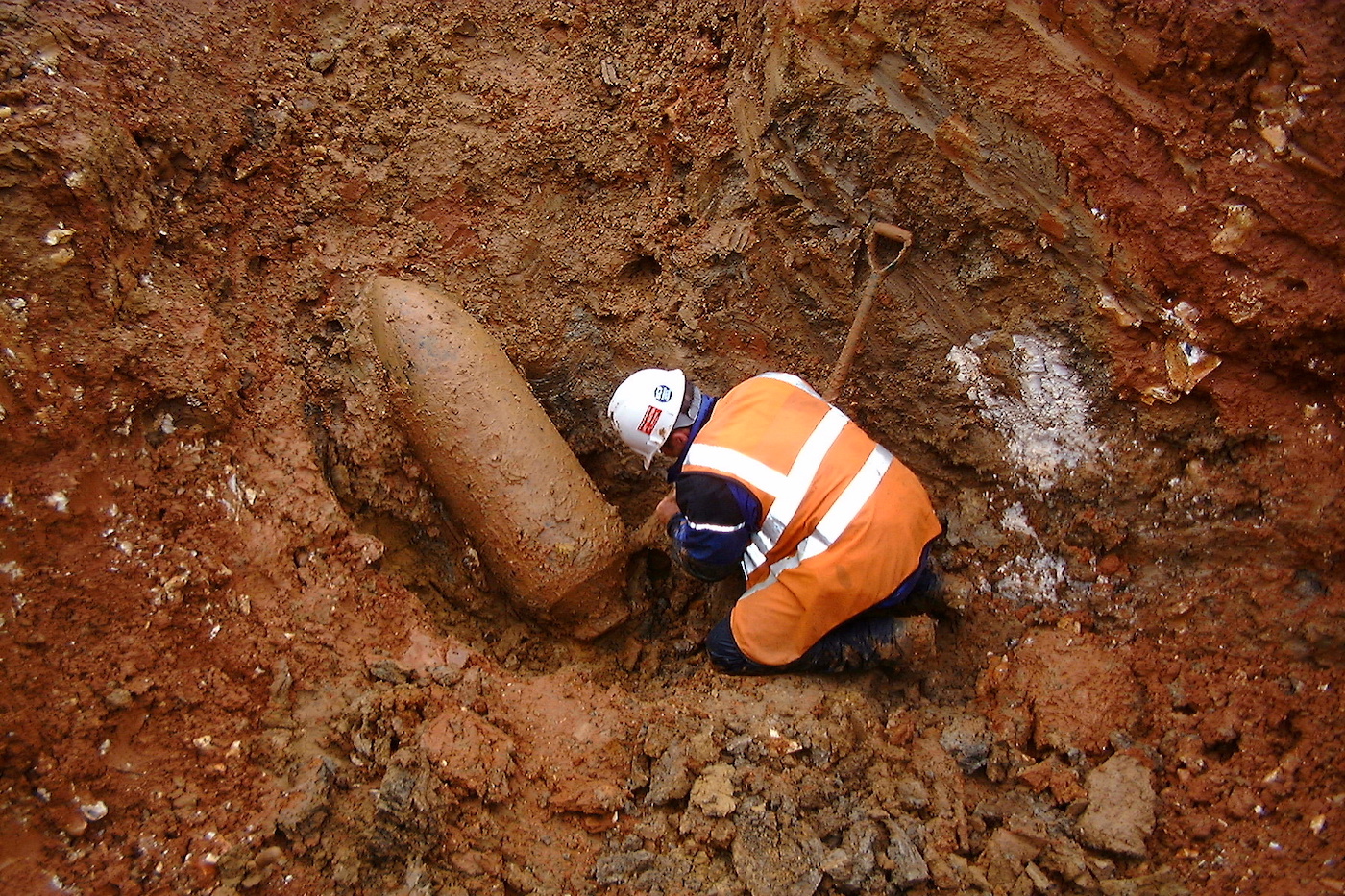Keeping site workers safe from WWII bombs
Meet the dedicated research team behind SafeLane's UXO risk assessments that have been described as “so detailed, no other investigation work was needed.”
SafeLane’s team of dedicated researchers compile detailed unexploded ordnance (UXO) risk assessments for client sites across the UK and beyond.
Meet the dedicated team behind the reports that have been described as “so detailed, no other investigation work was needed.”
Learn about the team’s favourite parts of their jobs, the most shocking discoveries they’ve made and the oldest archives they’ve used.

Which is your favourite part of the UXO research process?
Emily Damerell – mine is using archives and online resources to delve into a particular city or a specific incident.
Investigating a site with missing records or conflicting information can be fascinating, as we can look for the missing pieces to reveal what really happened to a place in the war.
James Armstrong – for me it’s using geographical information software (GIS) to overlay and compare historical maps, aerial photos, bomb plot maps and damage maps.
Patrick Weller – I agree with James, it’s incredibly satisfying to combine all of these historical sources and be able to identify the exact bombing incidents that caused the ruins on a site, or to spot military installations that have been censored within public mapping.
Kelly Barshell – it’s at the mapping stage where you’re most likely encounter an exciting story or fact about the site.
Robert Cliff – I enjoy comparing pre and post war maps to see which buildings are missing (likely destroyed by bombs). It’s like doing a spot the difference puzzle.
What is the most shocking UXO survey you’ve worked on?
Emily – the project that shocked me most was discovering the magnitude of ordnance discarded into the North Sea.
After the findings were mapped and consolidated, the visual representation of the discarded ordnance (bombs, sea mines, torpedoes, projectiles etc) proved the severity of UXO contamination in the marine environment.
The number of pieces of ordnance that have been found in the North Sea is staggering…but the really shocking thing is, so much more lies abandoned and as yet uncovered.
Rob – I was shocked by a site in Clydebank that we researched. It’s appalling how much devastation was wrought on a relatively small area. You wouldn’t suspect it looking at it now, but these areas were almost completely flattened by German bombing.
The Germans were trying to take out shipping and factory complexes in the Clyde, but they ended up destroying more houses than anything else. Approximately a third of houses in Clydebank were destroyed completely, fewer than ten escaped without any damage.
However, due to wartime restrictions, the destruction went almost entirely unreported.
Patrick – one of the most shocking UXO surveys that I worked on involved heavy damage to an airfield. During one of the air raids over this site, a bomb fell into a building and remained stuck and unexploded, wrapped up in wires in the roof – it was just hanging over the staff in the building.
Kelly – the most interesting report I worked on was for a site located within the historic perimeter of the Royal Arsenal in Woolwich. Its size and long operational history made it one of the most interesting projects I have ever researched.
What is the oldest archive you’ve used?
Rob – in the course of mitigation works sometimes 17th and 18th century cannonballs are unearthed. Most of them were made of solid cast iron so usually they don’t pose much of a threat – but some were filled with explosive material, so caution is always advised.
Just knowing the diameter and weight of a cannonball can tell us rather a lot about its use…
I’ve used 200 to 300 year-old diagrams and records to determine the date of some ammunition and even the sort of guns they would have been fired from.

If you’re planning any form of intrusive works on land or in the marine environment and you want to understand whether there is a risk of encountering UXO, contact the SafeLane research department today and discover how they can help you: call - 01634 471 340 or email - research@safelaneglobal.com
Other articles of interest

How UXO risk assessments keep clients on time and budget
Igne's research team create detailed UXO risk assessments so clients can determine the risk level of their sites.

Who should you trust to conduct a UXO risk assessment?
A UXO risk assessment is a necessity you just want to tick off your to do list as quickly as possible. However, with more and more suppliers to choose from, how do you pick the best provider? In this guide we highlight the checks you need to make before placing your order.


